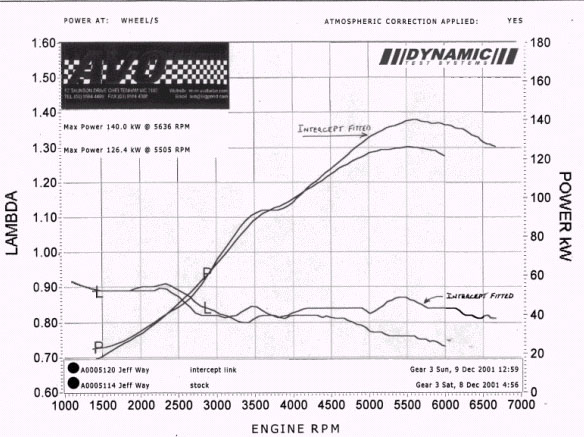
At our recent technical day at AVO in Melbourne there
was much discussion about fuel mixtures and resultant power output. Terry Wilson showed several people a “Lambda”
readout on their car and explained that their particular car was reading spot on
or perhaps it was too low and the fuel mixture was very rich, robbing them of
power! I will endeavour to briefly and
simply explain what a “Lambda” reading is so you can better understand your
readout. If you are somewhat of an
expert on this stuff stop reading now, if I am going to keep this simple and
brief it will also attract comments from better informed readers and my
knowledge is not that good!
Lambda 1.00 represents the exact point in an engine
when the correct amounts of air and fuel are present and all quantities
of both are burnt during combustion. If
your Lambda reading was as low as 0.70 then your mixture is rich to the point of
causing a loss of power and a high reading of 1.25 for example would be
dangerously lean. The Dyno hook up
measures the unused oxygen and/or unburnt fuel in the exhaust to give that
reading. Simple EH!
Having mastered that point, be aware that Lambda 1.00
is not always the perfect number for peak power and under full load conditions
Lambda 1.00 may be lean enough to cause pinging (detonation). For this reason the Lambda is adjusted to
between 0.82 and 0.85 throughout most of the power band by the engine
tuner.
Many manufacturers set the Lambda on Turbo versions
well below 0.80 particularly in the top end of the power band to ensure that the
engine does not run lean and detonate which can quickly destroy the engine
giving rise to warranty claims.
The Dyno read out shown with this article gives an
example of what can be done.
This is a Dyno Run for a stock 1990 MR2 Turbo before and after
tuning. Note that on the first run the
“Lambda” reading falls to 0.73 at 6000 RPM, the peak power is 126.4 Kw @ 5505
RPM with a Lambda of 0.75 and it decays from that point onwards as the fuel
mixture gets richer.
The second run on the Dyno was done after fitting a
Link “Interceptor” to the factory ECU.
This aptly named device intercepts the signal from the ECU to the engine
and allows the tuner to adjust the fuel mixtures to optimum levels maintaining
the Lambda readings within 0.80 to 0.90 range.
The result clearly shows what can be achieved using such a device. Note the dip in power at 3600 RPM where the
Lambda reading indicates more fuel is added to the mixture and the lean out at
5000 RPM to achieve 140 Kw at 5636 RPM.
No other work was done on this car other than fitting and tuning the
Interceptor and the boost readings are almost identical on both
runs.
Although not spectacular, a 14 Kw improvement is not
to be dismissed as this power gain can be achieved with relatively small cost
compared to an aftermarket ECU. It is
possible to obtain 150 Kw or more at the wheels on the same car with a fully
programmable ECU but it will cost over twice the price of the interceptor so on
a bang for bucks scale this device wins.
For costs and fitting details call Lee Wilson at AVO on (03) 9584 4094 and quote your MR2
Club Membership number for a club discount.
You will need to produce a current membership card at time of
purchase.
